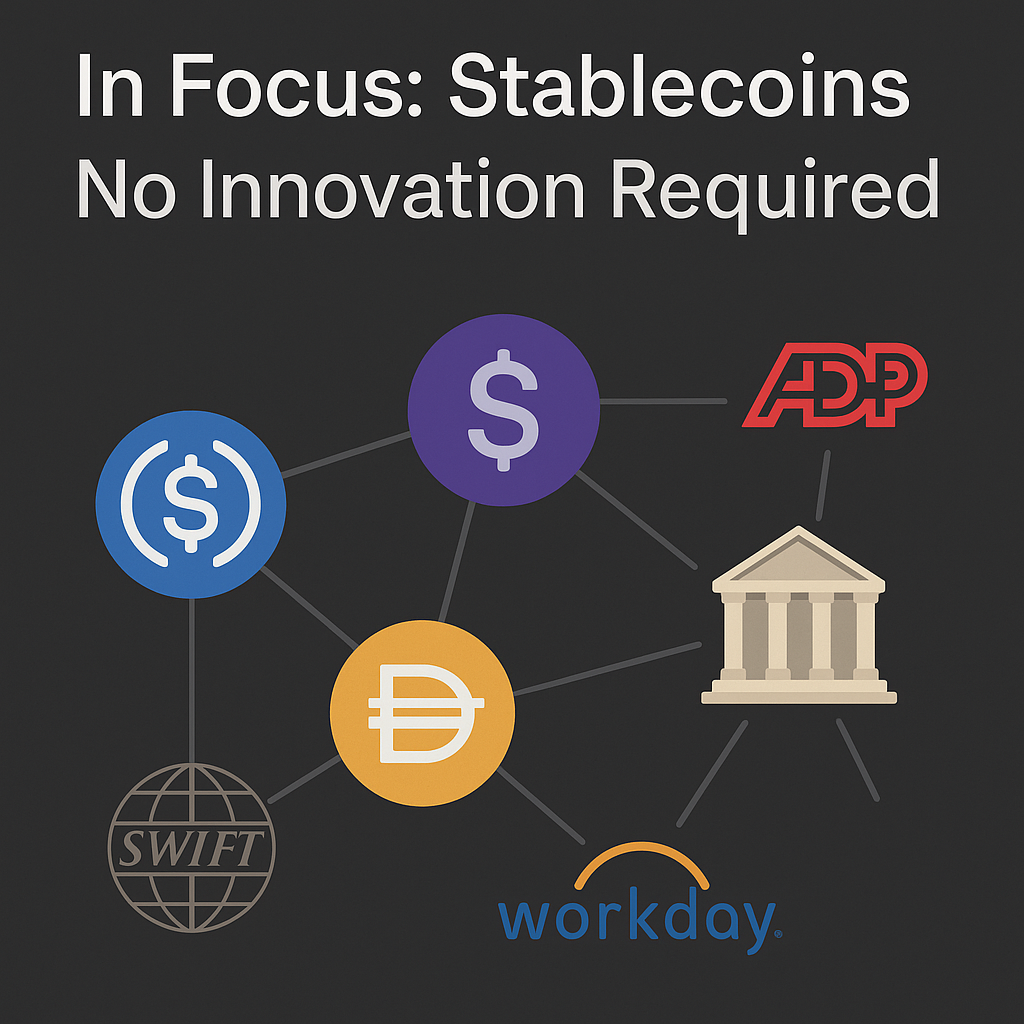Thesis Focus: Stablecoin Infrastructure - No Innovation Required
Once in a while we will publish a thesis focus for our industry and community to understand how we think about the world today. And, with Solana + Western Union’s announcement today, we want to further reiterate why Stablecoin Infrastructure is the “Boringtech” of dreams.
For years, crypto has promised to “rebuild” finance. But what’s happening with stablecoins today isn’t so much a rebuild, it’s a rerun.
Stablecoin infrastructure is quietly replicating the exact same dynamics as traditional finance (tradfi): remittances, payroll, lending, payday loans, B2B payments, FX, and more. The difference? The rails are now on-chain, and the participants are discovering that the innovation isn’t in what gets done, but who becomes indispensable when it happens.
The Great Mimicry of TradFi
Every major use case we see emerging in stablecoins already exists in traditional finance and that’s precisely the opportunity.
The shift is not about creating new financial primitives, but about migrating existing flows to more efficient rails.
Take remittances. Western Union, a legacy incumbent, is now testing stablecoin rails on Solana. It’s not a moonshot or a pivot into DeFi; it’s a pragmatic evolution. Their thesis is simple: cheaper, faster, programmable movement of value. The same treasury, compliance, and liquidity management practices apply but just with a different backend.
As investors, this mimicry matters. Because if you can identify which companies will sit at the denominator layer: the unavoidable infrastructure beneath all these familiar transactions. Once you’ve found those companies, you’ve found the “inevitable” players of the stablecoin era. That’s what Ascii is investing in.
Denominator Technology: The Inevitable Layer
Every tradfi sector has its monopolistic backbone.
In remittances, it’s SWIFT messaging and correspondent banking.
In payroll, it’s ADP and Workday.
In lending, it’s the credit bureaus and ACH networks.
Now imagine the on-chain equivalents being built not by “crypto-native” startups alone, but by the infrastructure providers who power all those stablecoin-enabled flows.
We’re not betting on the flashy consumer-facing apps. We’re looking for the plumbing: the entities whose APIs, nodes, or compliance rails become so standard that every remittance company, every FX desk, and every B2B payment flow must eventually integrate them if they want to use stablecoins.
That’s the denominator tech thesis:
If remittances go on-chain, who does Western Union have to work with to make that possible?
If payroll goes on-chain, who abstracts away the volatility and settlement risk?
If B2B payments go on-chain, whose infrastructure becomes the connective tissue between fiat and stablecoin balances?
Those answers are where the value will consolidate.
The Geography of Adoption
Today, mature markets like the U.S. dominate early trials. But the real explosion will come from emerging markets where limited banking infrastructure and high FX friction make stablecoins functionally superior to cash and local rails. Emerging markets also leapfrog adoption: they may be more comfortable with digital money because paper money has been failing them all along.
For these economies, stablecoins aren’t speculative assets; they’re infrastructure. And the companies providing on/off ramps, treasury services, and compliance layers in those geographies are effectively becoming the new global banking backbone whether or not they call themselves banks.
No Innovation Required
The brilliance of stablecoin infrastructure is that it doesn’t need to invent a new financial system. It just needs to rebuild the existing one, piece by piece, on more efficient technology.
And when the world’s remittance networks, payroll providers, and lenders finally move on-chain, the companies powering their stablecoin infrastructure will quietly become the new incumbents.
Not flashy. Not revolutionary. Just inevitable.
